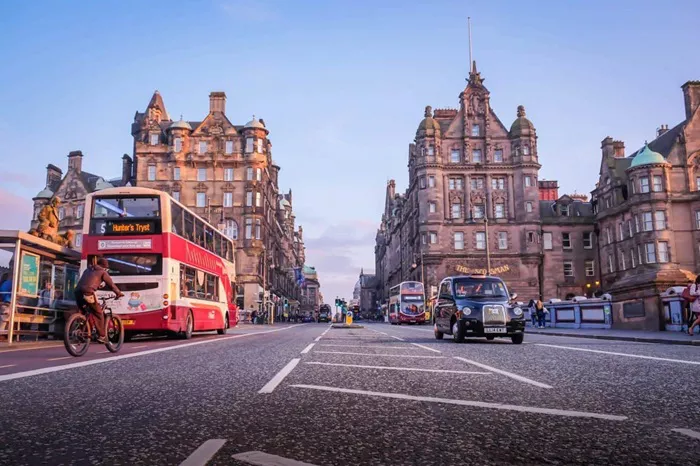If you hold a Biometric Residence Permit (BRP) and are planning to travel to Scotland, it’s important to understand the requirements for entry and travel within the country. Scotland is part of the United Kingdom, so the same rules that apply to the rest of the UK also apply to Scotland. Here’s everything you need to know about traveling to Scotland with a valid UK BRP.
BRP Validity
A valid Biometric Residence Permit (BRP) allows you to travel to Scotland without the need for a separate visa, as the BRP serves as evidence of your right to remain in the UK. Whether you are traveling within the UK or arriving from abroad, a BRP allows you to stay in the UK for the period granted on your permit.
Before planning your trip, be sure to check the expiration date of your BRP. You cannot travel if your BRP has expired, and it is important to ensure that your permit remains valid for the entire duration of your intended stay. If your BRP is about to expire, you must apply for an extension or replacement before traveling.
Entry Requirements
In addition to your Biometric Residence Permit, you must also carry a valid passport. This is a standard requirement for international travel and will serve as your primary identification for immigration purposes.
In addition to your BRP and passport, you may also be asked to show evidence of your ability to support yourself during your stay. This includes:
Proof of sufficient funds for the duration of your stay in Scotland.
A return ticket to demonstrate that you intend to leave the UK when your authorized stay expires.
It’s also advisable to have a detailed travel itinerary in place, including accommodation details and any planned activities within Scotland.
Travel Itinerary
While not a mandatory requirement, it’s a good idea to prepare a travel itinerary that outlines your stay in Scotland. This should include:
Accommodation details, such as hotel bookings, rental agreements, or the address of family or friends you will be staying with.
Travel plans within Scotland, such as sightseeing, business activities, or visits to specific locations.
Having a well-prepared itinerary can be helpful if you’re asked for more information by immigration officers upon arrival.
Customs and Immigration
Upon arrival in Scotland, you will go through customs and immigration. Remember to complete any customs declaration forms provided by the airline. You may be asked to declare any items you are bringing into the country that are subject to customs regulations.
It is important to keep both your BRP and passport safe while traveling. These documents may be required for identity checks at the border, and you’ll need them when departing the UK as well. Keep them in a secure place and ensure they are easily accessible for inspection.
Duration of Stay
The duration of your stay in Scotland will depend on the terms of your BRP. If you are allowed to remain in the UK for a specified period, typically up to 6 months, you can spend this time traveling throughout the UK, including Scotland.
If you need to stay longer, you may be able to extend your stay or apply for a different visa. However, this will depend on your specific circumstances and immigration status.
Always ensure that you do not overstay the conditions of your BRP, as this could result in fines, deportation, or difficulties with future travel to the UK.
Prohibited Items
As with any international travel, there are prohibited items that you cannot bring into the UK, including Scotland. Some of the items you must not bring include:
Firearms and ammunition
Illegal drugs and controlled substances
Restricted goods, such as certain plants, food items, or counterfeit items
Make sure to declare any restricted goods you are carrying to customs to avoid legal issues. It’s also important to check the UK’s customs and immigration website for the latest restrictions before your trip.
Conclusion
If you hold a valid UK Biometric Residence Permit (BRP), you can travel to Scotland without the need for an additional visa, making the entry process much simpler for individuals who are already residing in the UK. The BRP serves as proof of your legal right to stay in the UK, and it’s accepted for entry into Scotland as part of the wider UK immigration policy. However, it’s essential to ensure that your BRP is valid for the duration of your stay. In addition to your BRP, you must also carry your passport as an identification document, as it is still required for entry purposes.
When preparing for your trip, make sure to bring additional supporting documents, such as proof of sufficient funds to cover your stay. This could be in the form of recent bank statements, a credit card statement, or a letter from your employer if you’re traveling for business. You’ll also need to present a return ticket or proof of onward travel, which shows that you have plans to leave Scotland before your permitted stay ends.
Having a detailed travel itinerary on hand, which includes accommodation bookings, planned activities, and any meetings (if you’re traveling for business), is highly recommended. While not always required, this can help clarify the purpose and duration of your trip to immigration officials, ensuring a smoother entry process. Additionally, you may need to fill out customs declaration forms to declare any goods you’re bringing into Scotland, such as food, alcohol, or items exceeding personal allowances.
By following these guidelines and preparing the necessary documents, you can ensure a seamless, hassle-free trip to Scotland, whether you’re visiting for business, tourism, or another purpose. It’s always advisable to check for any updates to entry requirements before your journey, as rules can change, and certain regions may have specific instructions or travel restrictions in place.
Related topics:
- Can UK Citizens Travel to Russia? A Comprehensive Guide
- Can Bulgarian Citizens Travel to the USA?
- 3 Best American Road Trips

